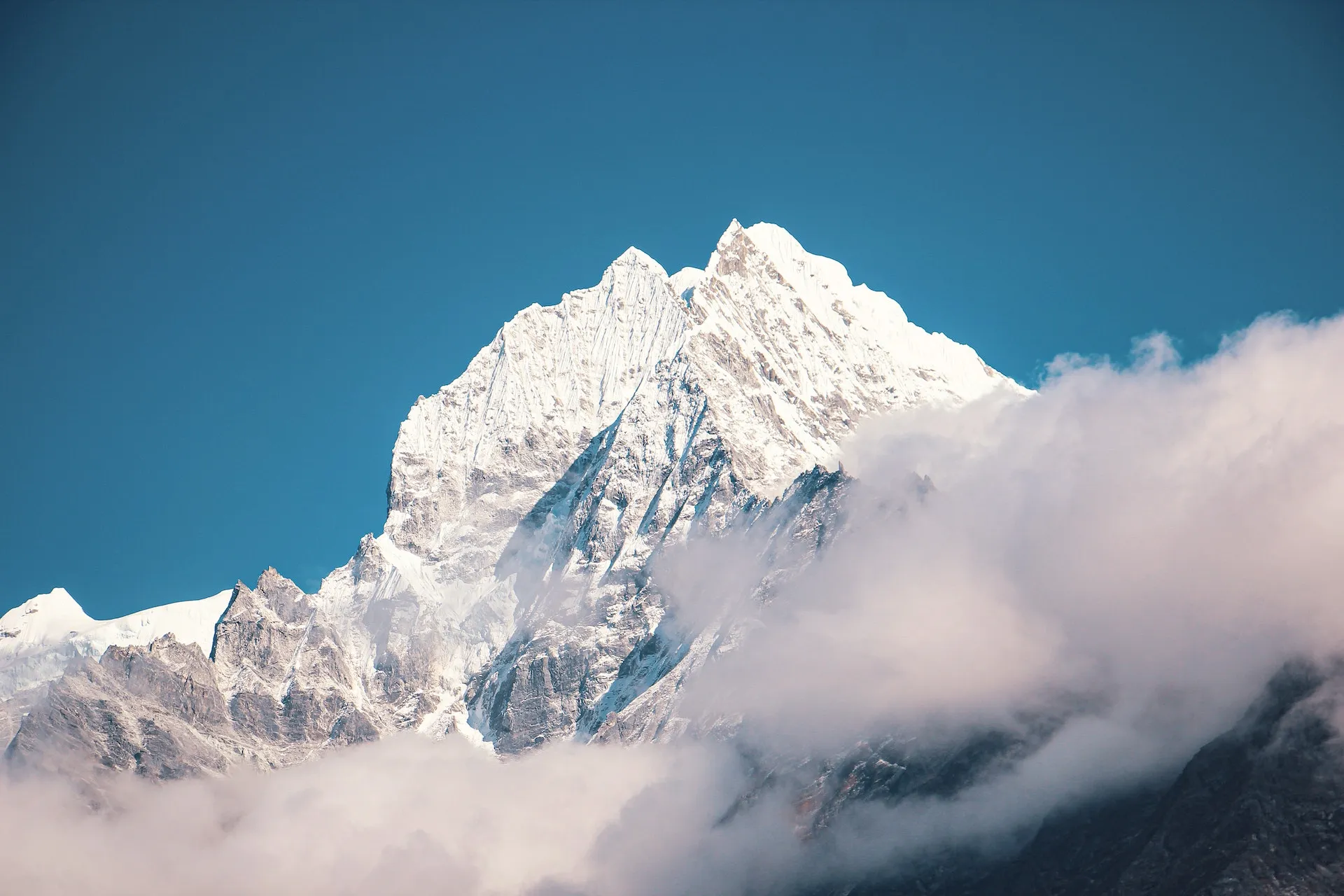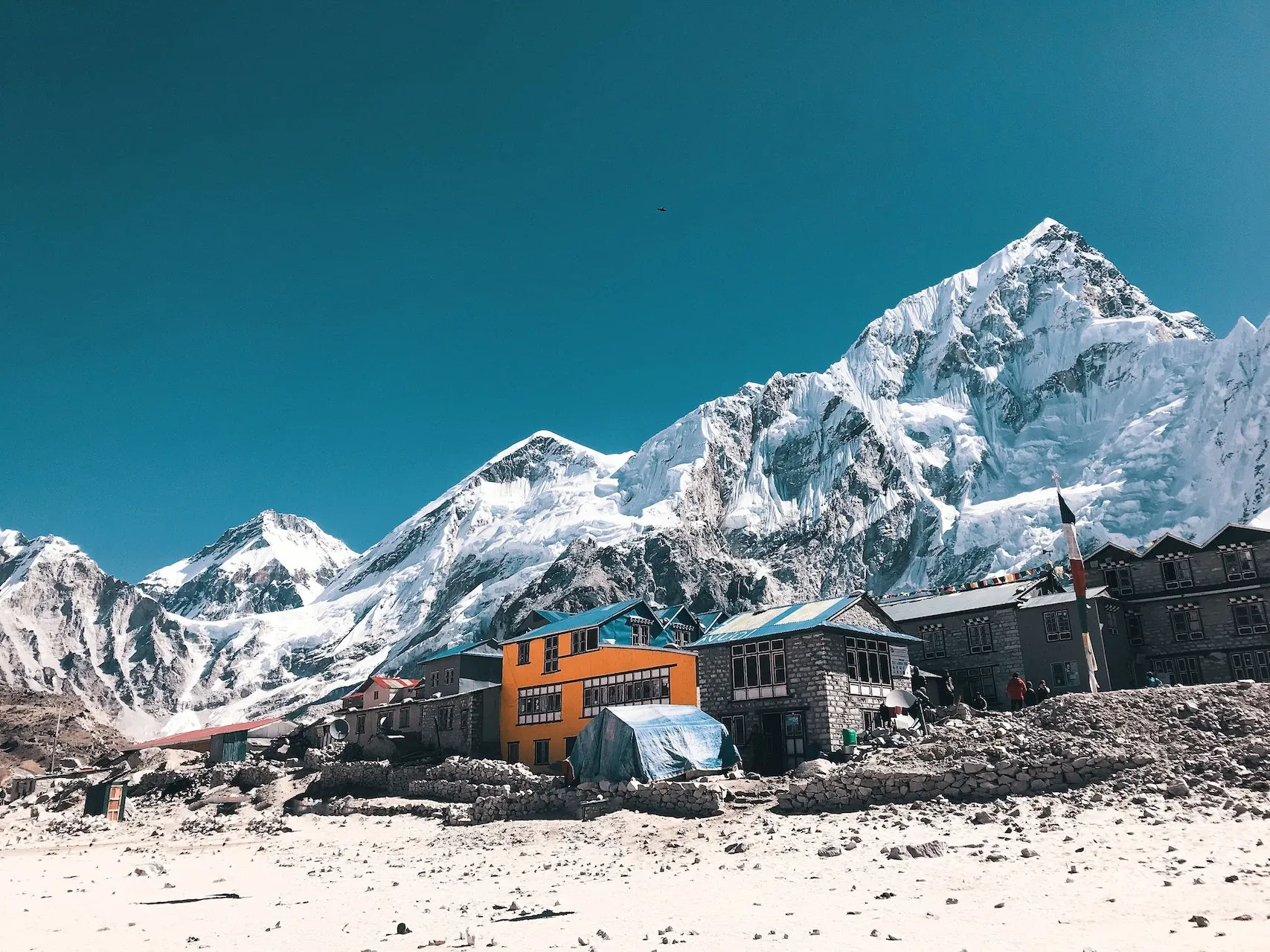(toc) #title=(Table of Content)
Dingboche: Trekking to the Rooftop of the Khumbu Region
Synopsis: Dingboche, nestled at 4,410 meters in the Khumbu Region, serves as a captivating gateway to Everest Base Camp, offering trekkers a unique blend of Himalayan culture and breathtaking landscapes. This Sherpa village, surrounded by peaks like Ama Dablam and Lhotse, is an essential acclimatization stop with its stone-walled houses and fluttering prayer flags. The journey to Dingboche involves trekking through vibrant Sherpa towns, visiting ancient monasteries, and experiencing the rich traditions of the Himalayas. Emphasizing responsible trekking practices, Dingboche provides a serene yet adventurous retreat into the heart of the Everest region, promising an unforgettable adventure beyond mere altitude. (alert-success)
Introduction
Nestled in the heart of the Khumbu Region, at an elevation of 4,410 meters (14,470 feet) above sea level, lies the picturesque settlement of Dingboche. This remote village, surrounded by towering peaks, is not only one of the highest human habitations in the world but also a gateway to some of the most breathtaking trekking experiences in the Everest region.
Dingboche - A Glimpse of Himalayan Life
Dingboche, also known as "Dingboche Thangma," is a small Sherpa village that offers a unique opportunity to experience the rich culture and traditions of the Himalayan people. The village is surrounded by lush green fields and offers stunning views of nearby peaks like Ama Dablam, Lhotse, and Nuptse. With its cozy teahouses, charming stone-walled houses, and prayer flags fluttering in the mountain breeze, Dingboche provides a warm and welcoming atmosphere for trekkers.
Trekking to Dingboche: Step by Step
Arriving in Lukla
Most treks in the Khumbu region begin with a flight from Kathmandu to Lukla. Lukla's Tenzing-Hillary Airport is one of the world's most challenging and scenic airports. It serves as the starting point for trekkers heading to Dingboche.
Trek to Phakding
From Lukla, the trail descends to the Dudh Kosi River and continues to the village of Phakding, located at an altitude of approximately 2,652 meters (8,700 feet). This is a relatively easy trek and provides trekkers with their first glimpse of the stunning Himalayan landscape.
Namche Bazaar
The next stop is Namche Bazaar, a vibrant Sherpa town located at 3,440 meters (11,286 feet). It's essential to spend a day acclimatizing here to prevent altitude-related issues. Namche Bazaar offers a chance to explore the local market, museums, and breathtaking mountain views.
Tengboche Monastery
Continue the trek to Tengboche, where you can visit the famous Tengboche Monastery, perched on a hill with panoramic views of Everest, Lhotse, and Ama Dablam. This spiritual interlude is a highlight of the trek.
Dingboche Bound
After Tengboche, the trail gradually descends to the Imja Khola River before ascending to Dingboche. The journey from Tengboche to Dingboche takes you through serene forests and alpine meadows, and eventually, you'll reach the beautiful village of Dingboche.
Acclimatization in Dingboche
Dingboche is a crucial acclimatization point before heading to higher altitudes. Spend at least one day here, exploring the area or taking a short hike to Nagarjun Hill for panoramic views.
Everest Base Camp
For those seeking the ultimate Everest experience, a trek to Everest Base Camp is a must. The trail from Dingboche to EBC offers spectacular views of the Khumbu Glacier, the infamous Khumbu Icefall, and, of course, Mount Everest itself.
Return Journey
After reaching Everest Base Camp and soaking in the awe-inspiring scenery, begin your descent back to Dingboche and retrace your steps to Lukla, completing an unforgettable trek through the heart of the Everest region.
Dingboche: Embracing the Himalayan Charm
Dingboche is not just a pitstop on a trek; it's a destination that encapsulates the essence of Himalayan life. The simplicity of Sherpa culture and the warmth of the villagers create an atmosphere that feels like a retreat from the hustle of modern life.
Exploring Dingboche
As you wander through Dingboche, you'll encounter friendly locals who are more than willing to share stories of their mountainous abode. The teahouses, adorned with colorful prayer flags, offer a cozy haven for trekkers to rest and connect with fellow adventurers. Take a moment to savor local delicacies, and you'll find that the food not only fuels your body but also nourishes your soul.
Trekking Preparations: Beyond Physical Fitness
Preparing for the trek to Dingboche goes beyond physical fitness. Understanding the local customs and traditional practices enriches the trekking experience. Learn a few basic phrases in Sherpa language, embrace the traditional attire, and participate in local customs. This cultural immersion adds depth to your journey, fostering a genuine connection with the Himalayan way of life.
Beyond Dingboche: An Everest Base Camp Odyssey
While Dingboche itself is a gem, the journey to Everest Base Camp amplifies the adventure. The trek from Dingboche to EBC unfolds like a captivating story, with each step revealing new panoramas. The Khumbu Glacier, the mesmerizing Khumbu Icefall, and the towering presence of Mount Everest create a sensory symphony that stays etched in your memory.
Responsible Trekking Practices
Amidst the allure of the Himalayas, it's vital to trek responsibly. Respect the delicate ecosystem, follow the 'Leave No Trace' principles, and support local businesses. Engage with the community, and your trek becomes a collaborative effort to preserve the pristine beauty of the Khumbu Region.
Conclusion: A Journey Beyond Altitude
Trekking to Dingboche and Everest Base Camp is not just a physical feat; it's a journey that transcends altitudes. It's a communion with nature, a cultural exchange, and a personal odyssey. As you bid farewell to Dingboche, take with you not only the memories of breathtaking landscapes but also the spirit of the Himalayas.
Conclusion
Trekking to Dingboche, one of the highest settlements in the Khumbu Region, is an adventure of a lifetime. It not only provides trekkers with a unique cultural experience but also allows them to immerse themselves in the stunning natural beauty of the Himalayas.
Remember to trek responsibly, respect the local culture and environment, and prioritize acclimatization to ensure a safe and enjoyable journey in this high-altitude paradise. Dingboche, along with a visit to Everest Base Camp, promises an unforgettable Himalayan adventure that will leave you with memories to last a lifetime.
Frequently Asked Questions
Q: Is a permit required for trekking to Dingboche?A: Yes, trekkers need to obtain a TIMS card and Sagarmatha National Park permit.
Q: How challenging is the trek from Tengboche to Dingboche?
A: The trek involves varying terrains but is moderately challenging. Proper acclimatization is crucial.
Q: What is the best time to trek to Dingboche?
A: The best time is during the spring (March to May) and autumn (September to November) seasons.
Q: Are there medical facilities in Dingboche?
A: Basic medical facilities are available, but it's advisable to carry a personal medical kit.
Q: Can I trek to Dingboche without a guide?
A: While it's possible, hiring a guide is recommended for a safer and more enjoyable trekking experience.
Q: What should I pack for a trek to Dingboche and Everest Base Camp?
A: Essentials include trekking gear, warm clothing, a good pair of boots, and a reliable backpack. Consult a trekking guide for a comprehensive list.
Q: Are there alternative routes to Dingboche for more experienced trekkers?
A: Yes, experienced trekkers can explore alternative routes, such as the Three Passes Trek, for a more challenging adventure.
Q: Can I capture the beauty of Dingboche through photography?
A: Absolutely! The village and its surroundings offer stunning photo opportunities. Respect local privacy and seek permission before taking pictures of people.
Q: Is it possible to extend the trek beyond Everest Base Camp?
A: Yes, for avid trekkers, extensions like the Gokyo Lakes trek or Island Peak climbing can be considered for an extended adventure.
Q: How do I contribute to local communities during the trek?
A: Support local businesses, buy handmade crafts, and consider making a donation to community projects. Your contribution helps sustain the local economy.



